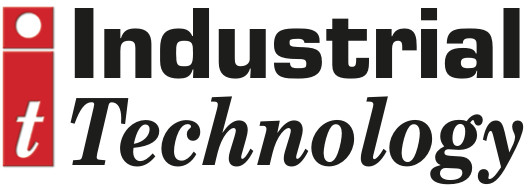
Posted to News on 23rd Sep 2013, 00:00
Why choose absolute over incremental position sensors?
For position sensing applications, many engineers are still specifying incremental sensors because they believe absolute versions are too complex and/or costly. Darran Kreit of Zettlex describes the two approaches and compares the relative benefits of each.

>Understanding the difference between incremental and absolute measurement techniques is a challenge for many engineers. As well as trying to tackle the terminology involved in position sensing, engineers also have to deal with confusing statements from sensor manufacturers who may claim they provide absolute measurement sensors when what they really offer is incremental.
>In this article, we will use the generic term 'sensor' to cover encoders, transducers and detectors. Let's start with definitions of 'incremental and absolute'. The distinguishing feature of an incremental position sensor is that it reports an incremental change in position. In other words, when an incremental sensor is powered up, it does not report its position until it is provided with a reference point from which it can measure. An absolute sensor unambiguously reports its position within a scale or range. When an absolute sensor is powered up it will report its position without the need for any reference information. The question 'What happens on power up?' is a good acid test to differentiate the two types of sensor. If the sensor has to go through some form of calibration step, it's incremental; if it doesn't, it's absolute.
>Some sensor manufacturers claim absolute measurement performance because a battery stores position information from the incremental sensor when power is lost. However, what happens when the battery runs out? Similarly, some sensor suppliers claim absolute measurement performance when an incremental sensor needs to move only a small amount at power up to gain the reference information. These are incremental sensors, even though they are promoted and priced as absolute sensors.
>Although potentiometers are still the most common form of position sensor, over the last 30 years the use of non-contact sensors has grown considerably. This continuing trend towards non-contact devices is due to the problems associated with potentiometer wear and reliability - particularly in harsh environments (notably vibration) or extended life-times.
>Potentiometers are almost always absolute but a common form of non-contact sensor is the optical encoder. These devices work by shining a light through or onto an optical grating and calculating position from the intensity of the returned light. Most optical devices are incremental. Typically, the position information is delivered using a series of pulses - usually in phase quadrature, so that direction of travel can be determined. These are usually referred to as A/B pulses. A separate pulse train, typically referred to as the Z reference, provides one pulse per revolution to act as a reference mark.
>The absolute optical device is similar but uses a different kind of scale, whereby absolute position is determined at power up - without the need for a reference mark. Typically, these sensors have a digital output and their resolution is defined by the number of bits in the output. A 10-bit device will offer 1,024 counts; an 11-bit device will offer 2,048 counts and so on.
>Approximately three times as many incremental sensors are sold as absolute sensors. A major reason for this is that an incremental sensor is normally cheaper than an absolute sensor of otherwise comparable performance. However, today, absolute sensors are not as expensive as you might think. And a change to absolute position measurement can offer improved performance, better accuracy and reduced overall costs. This is because there can be practical problems with the incremental sensor approach. For example, every time power is lost the system must perform a calibration step, which slows system performance and may have safety implications.
>Secondly, position is calculated by counting from a reference mark. In some cases - notably voltage supply variation or high speed position changes - count can be lost. This has a potentially catastrophic effect on operation, which, if left unchecked, can lead to prolonged out-of-sync operation. Most incremental sensors are optical and in order to provide high-resolution readings, very fine features are required on the optical grating, which sometimes measure just a few microns across. Whilst such fine features increase sensitivity, it also means that they become more delicate and susceptible to foreign matter. Moisture, grease or dirt can cause an optical device to stop working - or, worse still, produce incorrect readings.
>The price differential between absolute and incremental sensors is reducing, partly because of the greater use of absolute sensors but, more importantly, the introduction of new, absolute sensing techniques. Whilst optical sensors still remain the automatic choice for some engineers, new generation inductive devices now offer accurate, absolute position sensors that are unaffected by harsh environments.
>Rather than a grating and optical sensor, these inductive devices use printed, laminar windings and their fundamental operating principles are similar to those of a transformer or resolver. The fundamental physics enables absolute, compact, lightweight, high-resolution sensors, which are not dependent on optical features passing a light source. As well as being fundamentally absolute, they also have other advantages over optical sensors. First, they are unaffected by foreign matter such as dirt or moisture. Second, their measurement performance is generally unaffected by offsets or generous mounting tolerances. This means that they do not require their own precision housings or bearing assemblies but can be simply fixed to the host system's mechanical parts.
>In turn, this enables radical simplification, size and weight reduction of the surrounding mechanical parts through eradication of bearings, shafts, couplings and seals. Advantageously, these new generation inductive devices can be arranged with a generously sized through bore to allow the passage of the host equipment's shaft, cables or slip rings. From the design engineer's perspective, this new approach means that absolute measurement performance can be offered at a similar price to a traditional incremental device.







